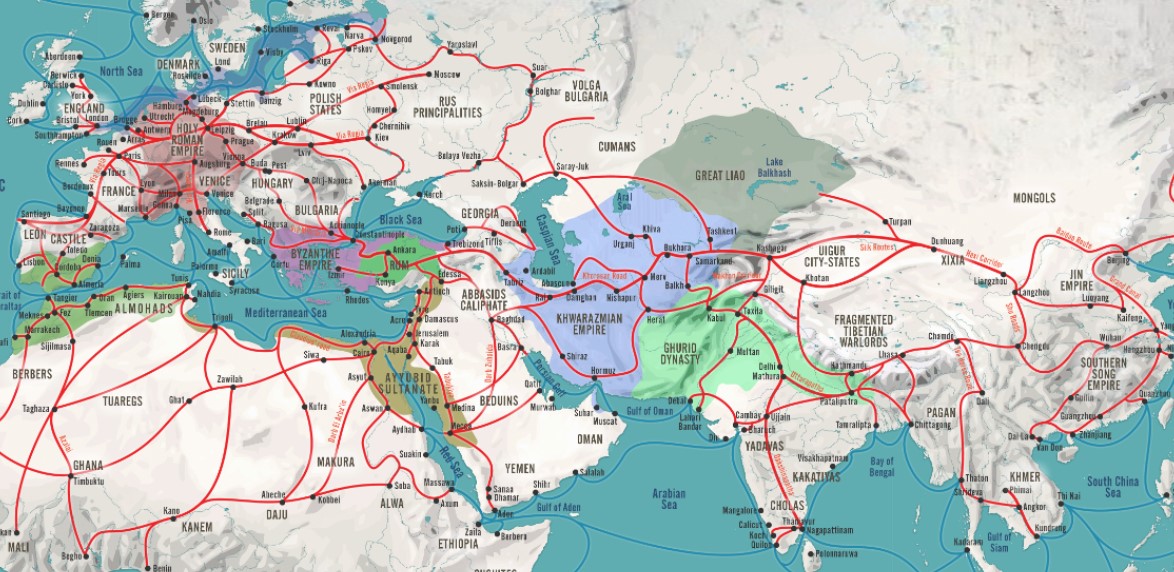The world of global trade is undergoing a seismic shift, and much of this transformation centers around an often-overlooked artery known as the Middle Corridor. Stretching from Asia through the Caucasus to Europe, this route offers a fresh alternative to traditional shipping lanes. With its unique geographical advantages and strategic enhancements, it’s quickly becoming a game changer for businesses worldwide. As companies seek faster and more efficient ways to connect with markets across borders, understanding how the Middle Corridor fits into this puzzle has never been more crucial. Let’s dive deeper into what makes this corridor so significant for global trade today.
Advantages of the Middle Corridor for Global Trade
The Middle Corridor presents a wealth of advantages for global trade, starting with its strategic location. Positioned as a bridge between Asia and Europe, it offers quicker access to key markets.
Reduced transit times are another highlight. This corridor can significantly cut shipping durations compared to traditional routes that often face congestion in major maritime chokepoints.
Cost efficiency is also noteworthy. By minimizing the distance traveled and avoiding certain tolls associated with established sea routes, businesses can lower their logistics expenses.
Additionally, the corridor promotes multimodal transport solutions. With railways, roads, and air connections seamlessly integrated, companies have greater flexibility in managing their supply chains.
This route fosters regional cooperation among countries along the pathway. Collaborative efforts enhance infrastructure development and trade facilitation measures—benefiting everyone involved in global commerce.
Success Stories and Case Studies of Businesses Using the Middle Corridor
Several companies have successfully leveraged the Middle Corridor to enhance their operations and reach new markets. One notable example is a Turkish textile firm that utilized this route to export goods to China efficiently. By cutting down on transit times, they managed to increase their market share significantly.
Another success story comes from an Azerbaijani tech startup. They partnered with European clients via the Middle Corridor, allowing them swift access to emerging markets in Central Asia and beyond. This strategic move elevated their brand visibility.
Additionally, logistics firms are thriving too. A Georgian freight company adopted innovative solutions along the corridor, optimizing routes for faster delivery. Their reliability has attracted various global businesses seeking efficient logistics options.
These cases illustrate how diverse industries can harness the potential of the Middle Corridor for growth and opportunity across borders.
Future Outlook and Potential Impact on Global Trade
The Middle Corridor is poised for transformative growth in global trade. As nations invest in infrastructure, connectivity will improve significantly. This will streamline supply chains and reduce transit times.
Emerging markets along the corridor stand to gain considerably. Increased access to new trading partners can elevate local economies. This shift supports diversification, lessening reliance on traditional routes.
Technology plays a pivotal role too. Innovations in logistics and tracking systems are set to enhance efficiency and transparency throughout the region. Businesses can adapt more swiftly to market demands.
Trade policies are evolving as well. Countries are recognizing the need for collaboration within this corridor framework, fostering an environment conducive to business expansion.
As geopolitical dynamics shift, alternative routes become ever more critical. The Middle Corridor offers not just a pathway but also opportunities that could redefine economic relationships worldwide.
Conclusion: The Growing Importance of the Middle Corridor in Shaping Global Trade
The Middle Corridor is rapidly becoming a pivotal player in the global trade landscape. As businesses and nations recognize its advantages, more are likely to leverage this route for their logistics needs. The enhanced connectivity it offers not only reduces transit times but also fosters safer and more efficient supply chains.
Countries along the corridor are investing heavily in infrastructure improvements, making it an even more attractive option. This investment signals a commitment to embracing new economic opportunities that can benefit all participants in global trade.
As companies share success stories of using this route, others will undoubtedly follow suit. The potential impact on markets worldwide cannot be understated; access to diverse regions promotes competition and innovation while lowering costs.
With increasing geopolitical complexities impacting traditional trade routes, alternatives like the Middle Corridor emerge as essential lifelines for commerce. It champions a collaborative approach among nations seeking mutual growth through shared resources.
The trajectory ahead suggests that as awareness grows about its benefits, so too will its role within international trading systems evolve. Embracing these changes could lead to significant shifts in how goods move around our interconnected world—a testament to the ongoing evolution of global trade dynamics.

